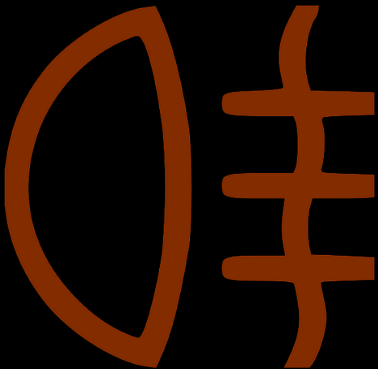Driving in Fog: The Guide to Fog Lights

We’ve reached that time of year, the days are darker, the nights are longer and we’re wondering whether the sun will ever return?
With the constant weather changes, we're always faced with new obstacles to tackle when driving, and this season is known for fog.
Knowing exactly how to drive in fog and what fog lights are key in ensuring you’re not becoming a danger to yourself or others when the visibility is reduced. But be careful, if you’re using them at the wrong time, you could be driving illegally.
It’s important to know what type of fog you’re driving in, is it mist, fog or freezing fog? As all will require slightly different things.
What Do Fog Lights Do?
An ordinary car light shouldn’t be used in foggy conditions as the fog will scatter the light particles, causing the light to bounce back to you before shining out on the road. This occasionally causes a wall of light amongst the fog, which can distract approaching drivers.
The fog lights located on the front of the vehicle are positioned on the front bumper and are cut off at the top. The light is wide spread which helps you see the edge of the road when you’re driving, not only that, it helps the light be projected under the fog, which usually hovers 12-18 inches above the ground.
Rear fog lights are located in the centre, or slightly to the drivers side, so that other cars can see your location when driving in reduced visibility.
Driving in Fog
Knowing exactly what to do when driving in fog is extremely important, by following these tips you can help improve the safety of yourself and others around you.
First things first, ensure you know exactly where your fog lights are, how to use them and that they’re actually working.
If you’re approaching fog, the most important thing is to slow down and check your mirrors on approach. Then once you’re driving in it, always keep a greater distance from the car in front than you usually would.
Remember, everyone has reduced visibility, so it’s important to take further precautions. If you spot a sign labelling ‘fog’ but you aren’t already driving in it, be prepared to enter it soon.
Fog means there’s a lot of moisture in the air, so make sure you’re constantly clearing your screen and keeping your windscreen demisted. We’ve got a handy guide to speedy demisting you should have a read of.
It’s necessary to use your fog lights when visibility reduces to 100 metres or less (which is about the size of a football pitch). But at no time should you use your high beam as this will reflect the light back even more, reducing the visibility further.
It’s important not to follow the tail lights of the vehicle in front, as this provides a false sense of security and could increase your chances of an accident.
When the visibility is really limited, it’s useful to wind down your windows at any crossroads or junctions to allow you to listen out for any oncoming traffic. But if you’re finding the weather too bad, it’s time to pull over, and wait for the weather to clear.
Have daytime running lights? Be sure to check your headlights have come on as foggy conditions may prevent this.
Is It Illegal To Drive With Fog Lights On?
As mentioned previously, fog lights must only be used in foggy conditions, and when visibility drops below 100 metres. However, if you have an accident in fog and weren’t using your fog lights, you run the risk of invalidating your insurance.
If visibility is not reduced, or when your vehicle is parked, using your fog lights is against the law. They ar emuch brighter than your normal headlights so there is a risk of dazzling oncoming drivers.
If you’re unsure, look out for the light (pictured right) on your dashboard to tell you when your fog lights are on or off.







